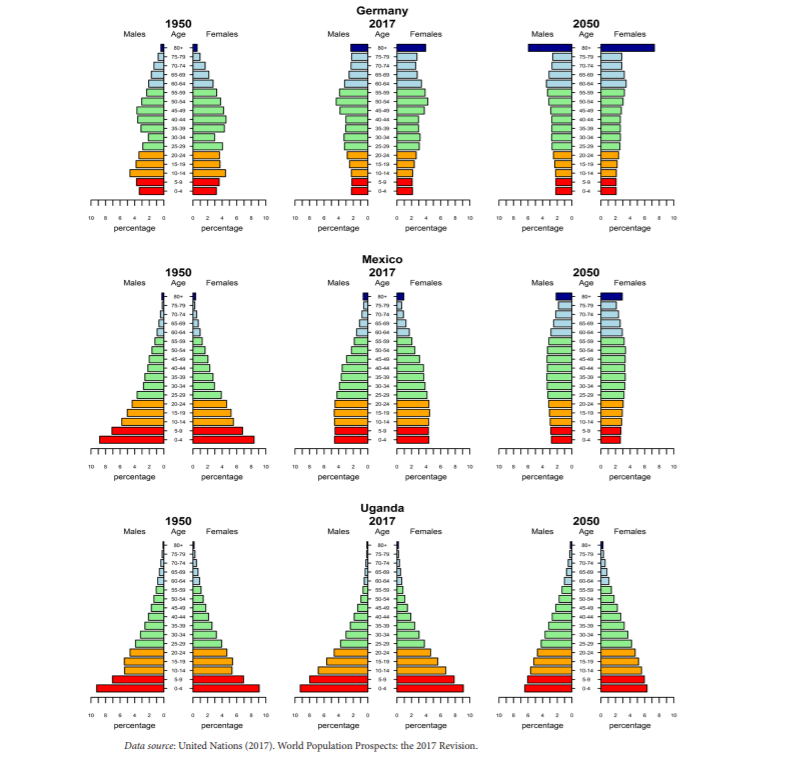Population ageing is a major demographic trend that is the result of the triumph of public health, medical advancements, and economic and social development over diseases, injuries and early deaths that have limited human life spans throughout history.
Through these triumphs, human life expectancy has increased, resulting in a larger proportion of elderly people globally. This trend is poised to become one of the most significant social transformations of the twenty-first century.
In this article, we will provide evidence for this trend, explain why it is occurring and how Crea8 can help you take advantage of it.

Based on UN’s population ageing estimates and projections, there were 703 million older persons aged 65 or over in 2019 globally (Table 1) (“World Population Ageing 2019” 2020).
Eastern and South-Eastern Asia was home to the largest number of the world’s older population (260 million), followed by Europe and Northern America with over 200 million.
Over the next three decades, the UN projects the global number of older persons to more than double, reaching over 1.5 billion persons in 2050.
All regions will see an increase in the size of their older population between 2019 and 2050. The largest increase (+312 million persons) is projected to occur in Eastern and South-Eastern Asia, growing from 261 million in 2019 to 573 million persons aged 65 years or over in 2050.

Population ageing is driven by the reductions in fertility and improvements in survival that occur during the demographic transition from young to old populations.
Lower fertility rates globally lead to a drop in the number of babies born, and as a result, a decline in the younger people in the population.
Europe was the first region to see lower fertility and increased longevity by the late nineteenth or early twentieth centuries in almost all areas. As a result, many countries in the region are amongst the world’s most aged. In Germany, for example, the total fertility rate had fallen to the replacement level of 2.1 live births per woman in 1950 and continued to decline to 1.5 in 2017 (“World Population Ageing 2017” 2020).
The demographic transition began later in Asia and in Latin America and the Caribbean; as a result, their populations are younger compared to those in Europe and in Northern America. In 1950s Mexico, fertility stood at 6.7 live births per woman and 5% of the population was aged 60 or over. Around 1970, fertility declined rapidly, reaching 2.2 live births per woman in 2017 (“World Population Ageing 2019” 2020). The share of Mexico’s population aged 60 years or over is projected to increase more than two-fold from 10% in 2017 to 25% in 2050.
Many countries in Africa have begun to see reductions in fertility only recently, while others have yet to see a significant decline in fertility. Thus, while the number of older persons has grown, their share of the overall population has remained small. In Uganda, for example, total fertility in 2017, at 5.5 live births per woman, was still comparatively high, although it had fallen from 6.9 live births per woman in 1950 (“World Population Ageing 2019” 2020). Fertility in Uganda is projected to continue to decline slowly towards 3.2 live births per woman in 2050 and the percentage of the population aged 60 or over is projected to rise gradually, reaching 6 per cent by the mid-century.

Since 1950-1955, life expectancy at birth has risen by more than 10 years in Northern America, Europe and Oceania, and by close to 25 years in Latin America and the Caribbean (“World Population Ageing 2019” 2020). In each of these four regions, life expectancy is projected to surpass 80 years in the coming decades (figure 2).
Asia has achieved the largest gains in survival, adding nearly 30 years to life expectancy at birth since 1950-1955. The region is projected to continue to make improvements, with life expectancy projected to increase from 72 years in 2010-2015 to 78 years in 2045-2050.
Africa has lower levels of life expectancy, owing largely to persistently high child and maternal mortality risks in many countries, as well as excess mortality caused by HIV/AIDS and political conflicts over the past quarter century. Nonetheless, Africa added 23 years to life expectancy at birth since 1950-1955 and is projected to see further improvements from 60 years in 2010-2015 to 71 years in 2045-2050.

Given that this is a megatrend that is going to have large impacts across the economy and financial markets, your portfolio should be tilted to take advantage of this trend.
Crea8’s professionally built “Global Ageing Society” investment strategy can help provide your portfolio with the edge to ride this trend. The strategy consists of multinational firms within the healthcare, technology, tourism and financial services sectors, all of which are well-positioned to benefit from the ageing population trend.If you have other stocks in mind that you think would stand to appreciate with this trend, you could build your own ‘Ageing Society’ investment strategy with our Factor based investing service.

Looking for all the stocks to invest in this megatrend might turn your hair grey. Instead of that, try out our Factor Based investing service to get an easier way to invest in stocks that stand to benefit from increased adoption of electric vehicles and driverless cars around the world.
“World Population Ageing 2019”. 2020. Un.Org.
https://www.un.org/en/development/desa/population/publications/pdf/ageing/WorldPopulationAgeing2019-Report.pdf
“World Population Ageing 2017”. 2020. Un. Org.
https://www.un.org/en/development/desa/population/publications/pdf/ageing/WPA2017_Highlights.pdf
